Let us know what type of content you'd like to see more of. Fill out our three question survey.
Frontier Insights Libya: Understanding Children’s Digital Access
May 4, 2023
Sesame Workshop and the International Rescue Committee (IRC) partnered to address the critical needs of children affected by the Syrian conflict and other crises in Jordan, Lebanon, Syria, and Iraq. The Ahlan Simsim initiative addresses the urgent needs of children affected by crisis and conflict by creating educational resources that reach children through an award-winning and impactful TV series viewed by more than 23 million children and through early childhood services that integrate media reaching more than 1 million children and caregivers in Iraq, Jordan, Lebanon, and Syria. Ahlan Simsim is exploring the possibility of expanding its work to other countries, specifically Libya.
Over the past 18 months, DAI’s Center for Digital Acceleration has been working with Sesame Workshop to explore the possibilities for using digital tools to provide education services to young children living in crisis-affected communities. Using DAI’s Frontier Insights™ methodology, in 2021 DAI conducted research in Yemen, Colombia, and South Sudan to understand communities’ barriers to connectivity, technology usage habits, and ways to leverage those habits to improve access to educational content.
In October and November 2022, the team continued its research in Libya, focusing on three locations: Khoms (east of Tripoli), Brak al Shati (south), and Tripoli Center. The local research team conducted surveys with 64 households, focused on children ages 3–8 and their parents or caregivers. In this blog we share the findings from that research.
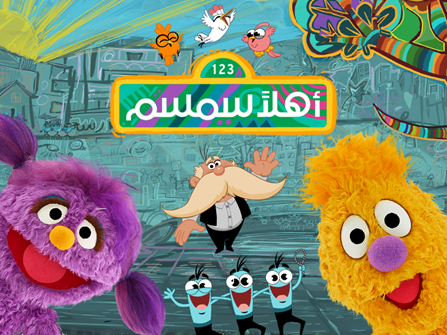
Key Findings
Despite the challenging connectivity environment caused principally by years of conflict and maintenance challenges—such as frequent power cuts and poor mobile connectivity infrastructure—Libyans do not appear to face significant connectivity or device access challenges. Affordability of mobile data or mobile handsets is also not a significant concern for most families interviewed, and mobile phone penetration and television ownership are both high.
Families use the internet frequently for entertainment, but there is a high level of caution around children’s use of technology and access to the internet: Parents and caregivers are not only concerned about access to violent, inappropriate, or non-Islamic content, but also with their children’s health and the perceived negative effects of technology on mental development.
The key findings from the research are as follows:
1. Television and YouTube are the main sources of entertainment for children
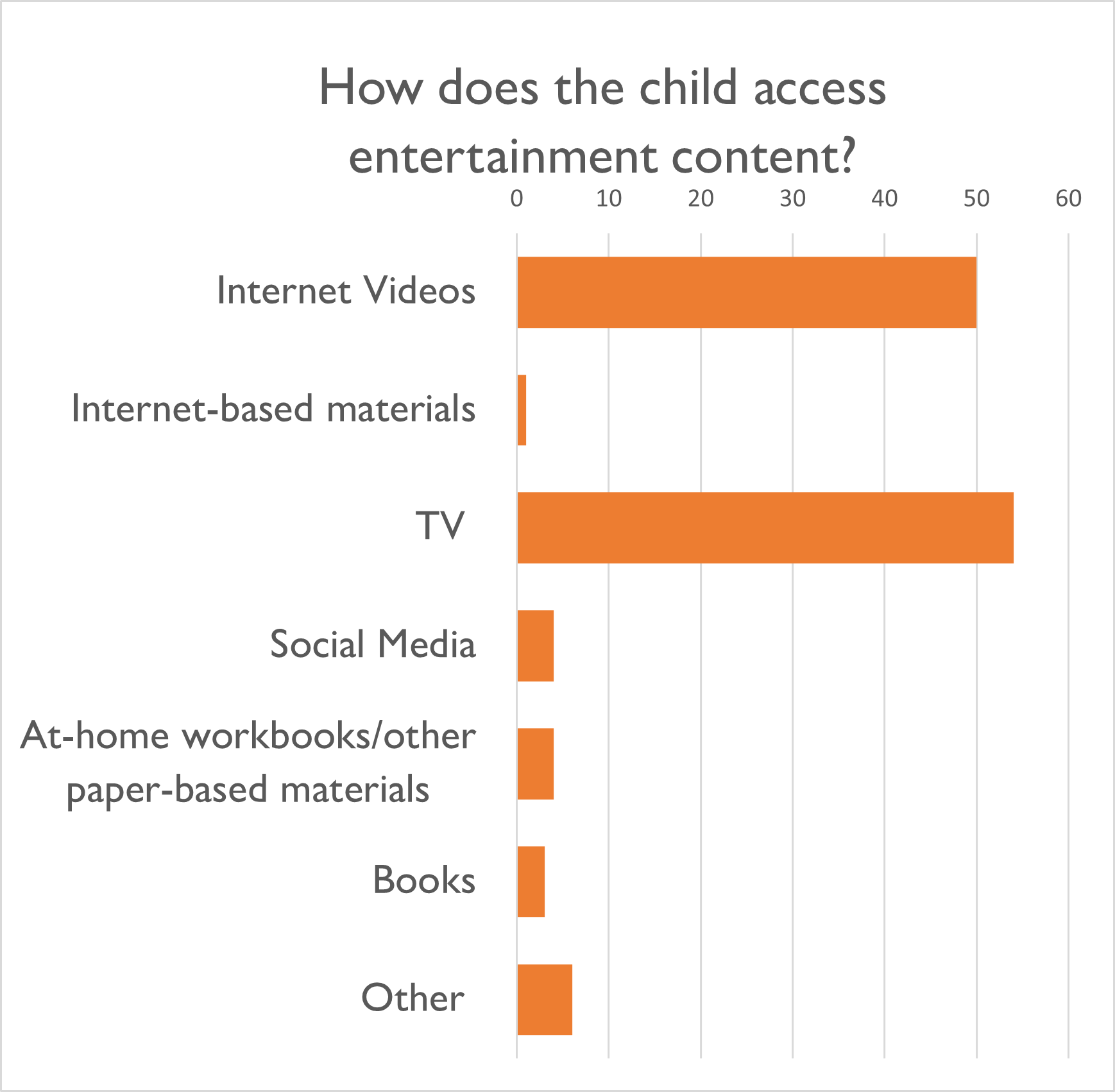
When asked about entertainment content, most children noted that they watch TV, play games on a mobile phone, and use the internet for entertainment. Indeed, a significant majority of children (95.3 percent) watch television, with most viewing for over an hour a day. When it comes to internet videos, children tend to access content on mobile phones and tablets, with a vast majority using YouTube.
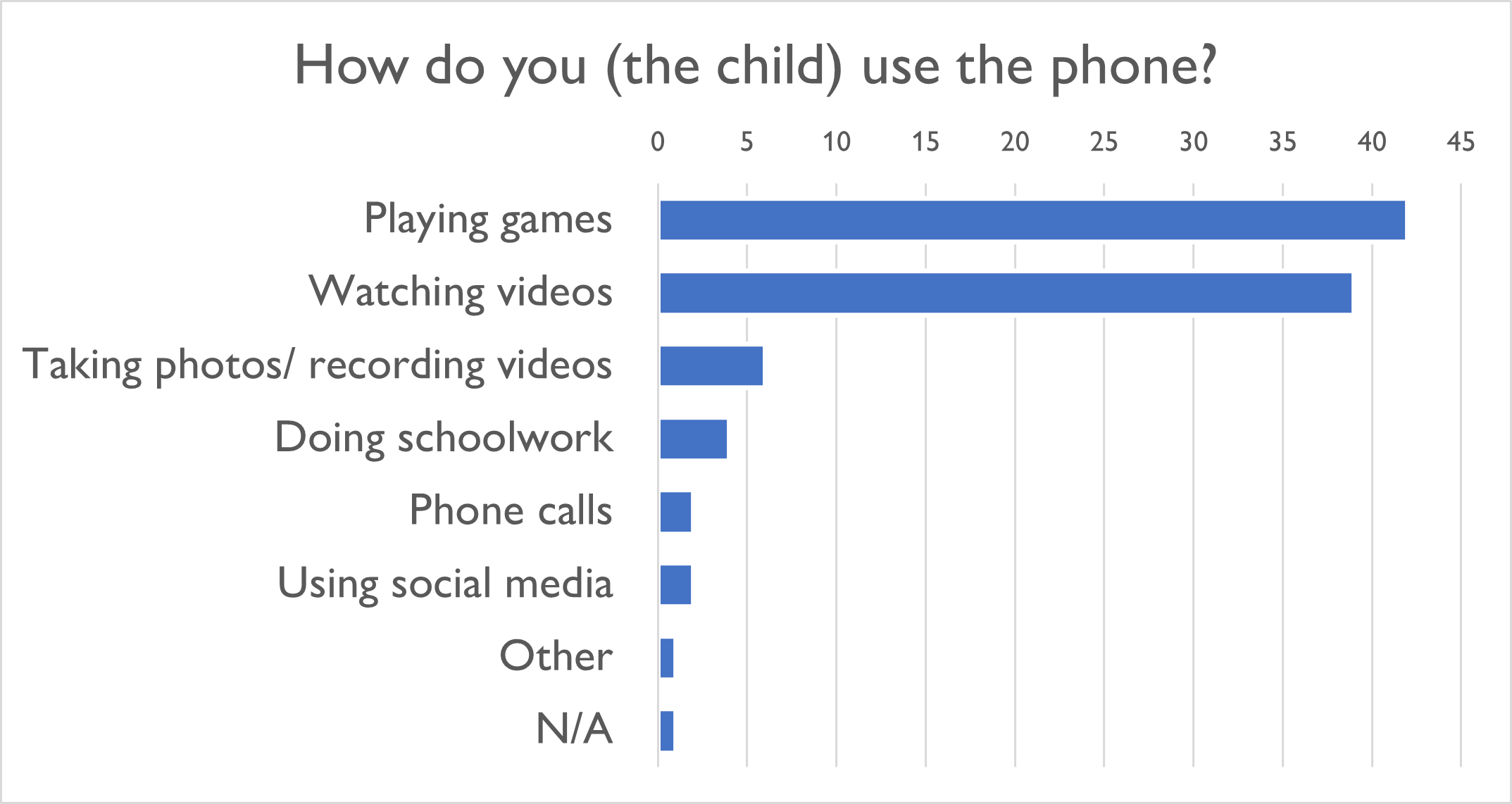
The children interviewed are very tech-savvy. When asked to show the enumerator how they use the mobile phone, three children opened offline games on the mobile phone, and all others went straight to YouTube. Children were able to type and audio search for the YouTube content they wanted or scrolled down to what was recommended to find something to watch.
2. Children watch a lot of international programming
There are few Libyan channels available on television, with most being news channels. The most popular TV channels for children were regional channels, accessed through subscription-based boxes, including MBC3, Spacetoon, Cartoon Network Arabia, and Majid TV. Only one survey respondent mentioned Disney, and one mentioned Netflix. Many children reported that they watch generally the same programs on YouTube as they do on TV: many of which are international programs such as Spiderman, Masha and the Bear, SpongeBob Squarepants, and Tom and Jerry; and regional programs such as Amouna Al Mazyona, Naqib (Captain) Khalfan, and Freej/Umm Khammas. Children also watch YouTubers mostly from the United States.
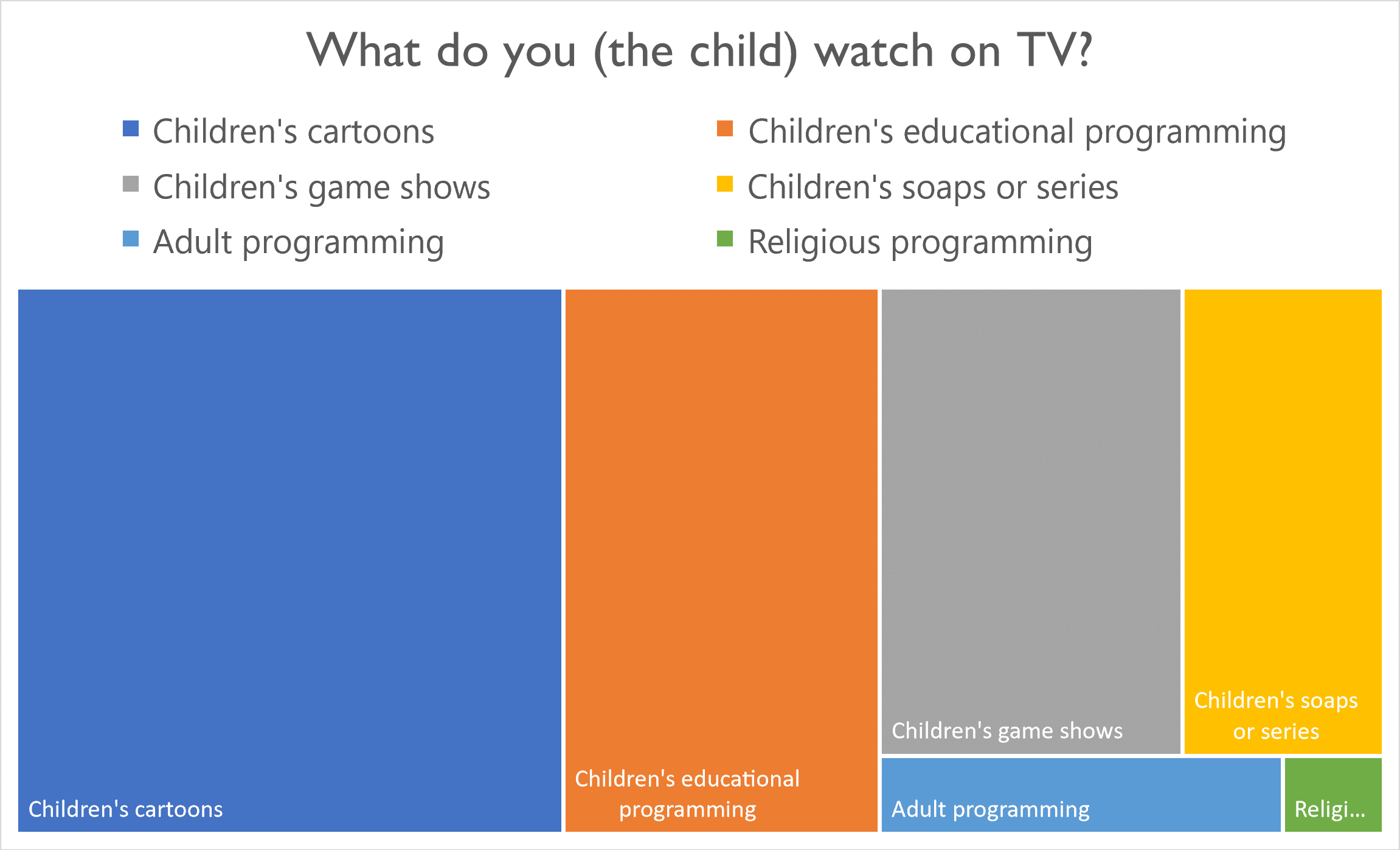
3. Most adults share their mobile phones with the children in their households but try to limit the amount
Most parents (89 percent) share their mobile phones with their children. A few parents note that their child is only able to use their mobile phone offline for games, but a majority allow their child to access the internet. Indeed, 76.6 percent of children report that they have access to the internet on a mobile phone or other personal device (mostly tablets).
Children use the phone at various times—reports are split relatively equally between morning, afternoon, evening, and night. Children are allowed to use the phone more than once per day, at an average of 1-1.5 hours total. Perhaps predictably, 87.5 percent of children report that they do not get to use the internet as much as they want to, stating the main barrier as their parents’ refusal. Indeed, parents expressed frustration that their children beg for the phone when the parent tries to restrict how much they use it. They see this as a response to the child being addicted.
Of the 64 interviewed, 57 parents have concerns about their children using technology in terms of health and safety. A majority of parents chose to restrict what their child does on the internet (82.8 percent), and many parents note that they also restrict time spent to ensure their children do not incur negative effects. Most children are supervised by a parent, sibling, or other adult when they access the internet.
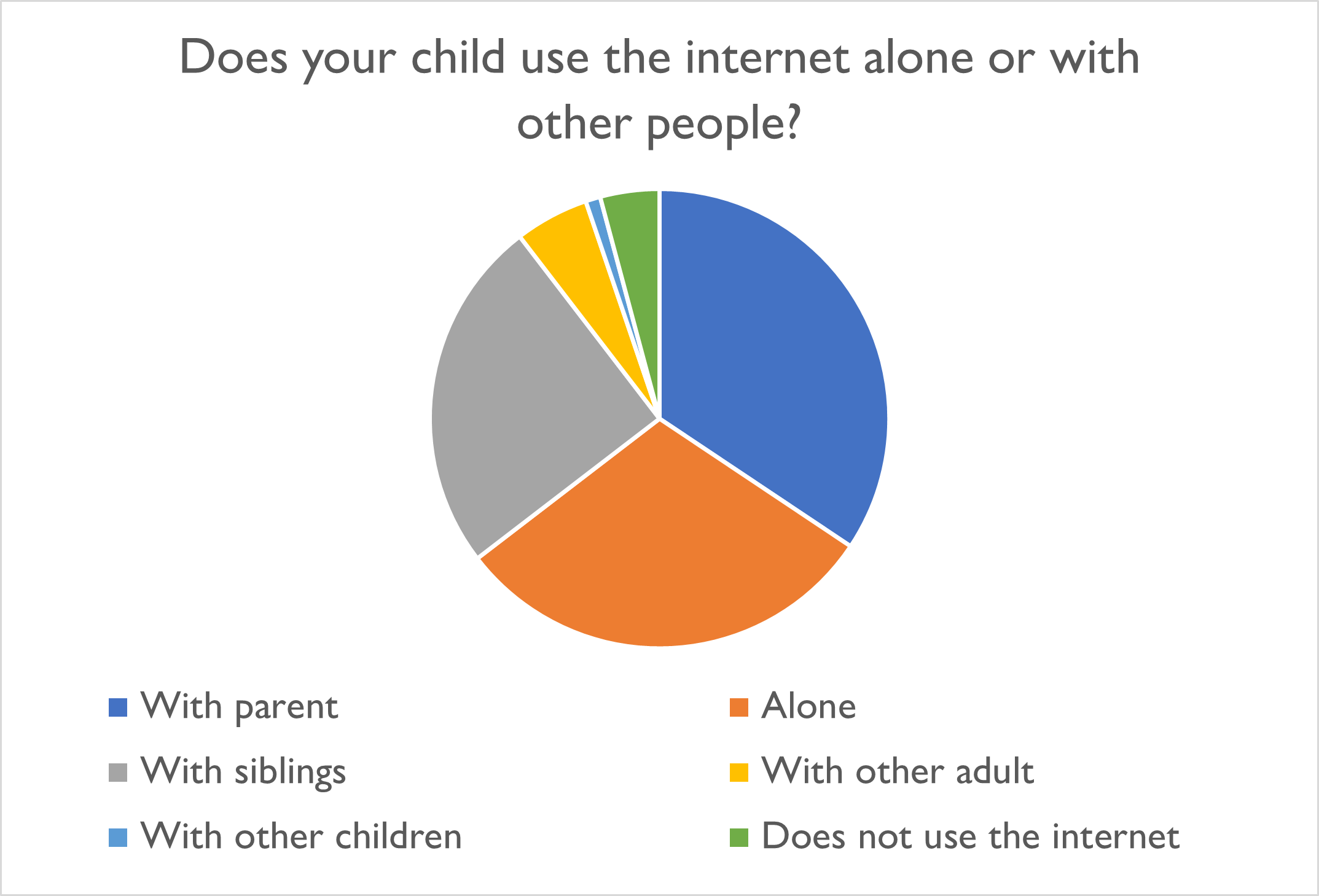
Concerns around technology usage appear to apply principally to internet use as, contrary to internet use, parents allow children to watch TV alone (54 percent) and choose what they want to watch (70 percent).
4. Parents and caregivers are concerned about the health and safety implications of too much technology use
Most parents are afraid that children might have adverse health effects if they use technology too much to watch videos or play games for too long. Parents are concerned that high usage of technologies such as TV, mobile phones, and tablets will:
- Impact their social skills, rendering them unable to communicate effectively. Parents believe that autism and nervousness are potential results of over-use of technology.
- Damage children’s eyesight.
- Cause their child to become addicted and be a distraction from studying, resulting in a delay in learning.
In addition to health concerns, most parents are worried about their children accessing adult content, violent content and/or anti-Islamic content when they are online. There was consensus among parents and caregivers that children need to be monitored when they use mobile phones and tablets, as they could access content that is inappropriate in terms of faith, customs, and traditions.
Violent and inappropriate content was a particular concern, with parents concerned about their children emulating what they see on the internet (from violent content to pranks, to imitating behaviors from cartoons such as Spiderman).
5. Technology is not perceived as a tool for education, but many parents are open to the idea
There was consensus that technology—including use of tablets, mobile phones, and TV—are for entertainment rather than for education. Parents noted that they mostly use hard copy materials from the school to continue education at home, and less than 20 percent use the internet or TV for their child’s education. Indeed, most parents and caregivers surveyed reported that they search for games for children, cartoons, and musical shows on YouTube. Only a few noted that they search for educational materials such as videos for teaching English or learning to draw.

However, some parents say they feel that technology can complement traditional education and make up for shortcomings in the education system. Parents would like their children to use technology more to increase access to education, but with caveats around appropriate content, noting that it should be appropriate for the age group, aligned to the curriculum, and approved by the Ministry of Education. Parents note that any technological solution would likely need to be deployed with parental supervision, but that in an ideal world, content could be provided in a way in which they don’t risk their children accessing negative content.
What’s Next?
Understanding the barriers and opportunities to accessing technology, connectivity and virtual learning and videos in Libya will guide how Sesame Workshop proceeds with program design and implementation. The learnings allow the Ahlan Simsim initiative to explore the possibility of expanding its work to Libya. The next step is to leverage the Technology Decision Roadmap to select the appropriate technology solutions, delivery methods, and partnerships models to roll out content to target populations.
Editor’s Note: Researchers from Altai Consulting and its team of enumerators conducted this research. This blog is part of a wider series, where we share our findings and interesting insights into the digital lives of children in these contexts. See also our blogs for Sesame Workshop on Frontier Insights in Colombia, South Sudan, and Yemen.